It’s summer holidays and most people have better things to do than spend their time checking out blogs on the Internet, so I’m reconciled to getting rather fewer than my usual 3000+ readers this month.
Given that we’d all rather think about holidays than 19th century history, I’m going to indulge myself this week with a little bit about the long weekend I just spent in Cluj, the capital of Transylvania. My beloved and I were there to dance at a tango festival, and with dances every afternoon and most of the way through every night we had very limited time to see much of Romania, but Cluj is a small city and we were able to get something of a feel for the place. Here are 10 things the guidebooks don’t tell you but which might be useful if you ever visit the area.
1. Romanian meals are huge
Romanian food is excellent. In Cluj meals seemed to be heavy on pork and cabbage, though other meats, fish and even vegetarian options were available. The food we ate was mouth-wateringly good but, even so, portion sizes were mad.
Here is a starter for two.
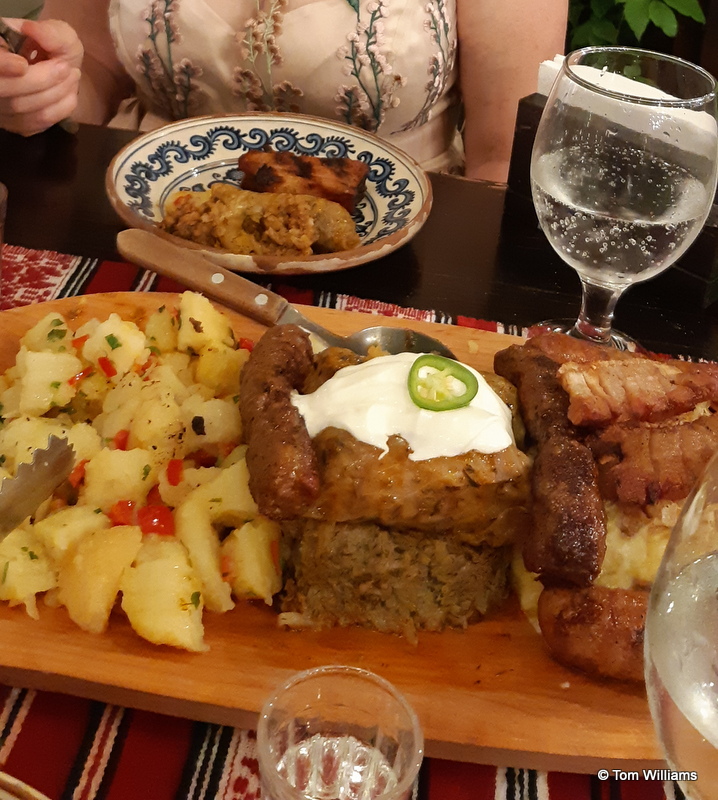
There is more food on my plate and more that we couldn’t get into the picture. Needless to say, we did not go on to the main course.
At another restaurant the main course included 350gm of meat (quantities are usually shown on menus) plus cabbage and potato and sauces. We asked if it could be split across two dishes and shared, which produced perfectly sensible portion sizes. (Nobody seemed to think our request unreasonable, so don’t be embarrassed to ask.)
Not only is the food excellent and served in madly generous portions but, even with the pound in free-fall, it’s all amazingly inexpensive. If you ever visit Cluj, make sure you allow yourself plenty of time to eat.
2. Romanians eat early.
In Cluj the main meal seems to be lunch. People don’t appear to go for long lazy dinners. Many kitchens close at 10.00 or even earlier, so if you want good food, don’t try to nip out for a late evening meal.
3. Public transport is excellent
All the guidebooks tell you to get a taxi from the airport. I have no idea why. In Cluj there are regular buses from the airport to the town centre. Google gives accurate information on times and routes. You will have to pay for a ticket before you board the bus, but the main bus stops (including the one at the airport) have self-service machines for tickets, which accept credit cards. Buy your ticket and validate it on the bus. Most tickets seem to be good for two journeys – you put one end into the validator for one journey, and the other end for the next. If you stand there looking puzzled, someone will show you how to do it.
There are masses of buses, so getting around is easy (although the centre is so small we generally walked). There is a cycle hire system, similar to the one in London, though we never worked out how to use it.
4. English is widely spoken
Perhaps Cluj is particularly likely to have lots of English speakers because it’s a university city with a lot of young people, but English does seem a popular language choice. Despite the proximity of Germany and Russia, most signage is in Romanian and English (and, sometimes, Hungarian, as this is an area of Romania with a large Hungarian population). Romanian is a Romance language, so if you have decent French or Italian you’ll probably be able to read important signs even if they are not translated.
5. People are really friendly and helpful
Even when their English is weak, the locals we met were all friendly and helpful. A Romanian friend says that people are particularly nice to foreigners, but we did notice that public behaviour seemed generally gentler than in, for example, London. Cars stop religiously at pedestrian crossings and there is remarkably little of the impatient horn blowing that characterises so many cities. Perhaps it’s that the heat (it was 90° in the shade when we were there) means people don’t have the energy to get overexcited – or perhaps they’re just nice people.
6. Most places take credit cards
Plastic seems as popular in Romania as everywhere else. Contactless payment is easy, even in very small shops.
7. There’s a huge tango scene
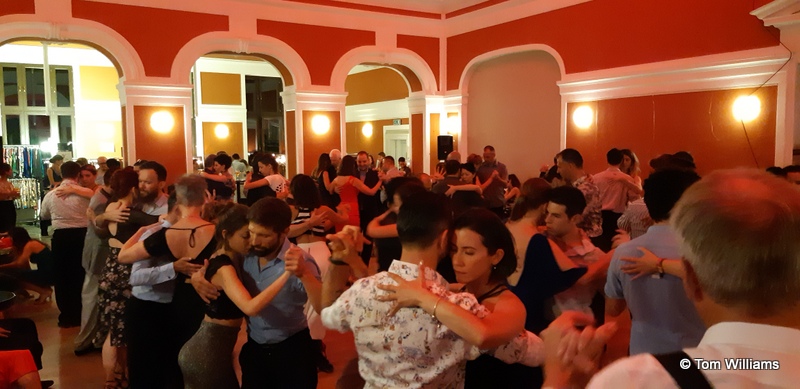
Not just in Cluj: definitely in Bucharest and in smaller towns too. This may not interest you, but it’s why we went.
8. There are an awful lot of churches in Romania
After the fall of communism, Romanians indulged in an orgy of church building. The main church is Romanian Orthodox and at one point new churches were being built at a rate of around 10 a month. There are Roman Catholics, Greek Catholics, and various protestant sects, so in some cases rival congregations set up their churches next to each other.
We even came across Jehovah’s Witnesses recruiting in the centre of town.
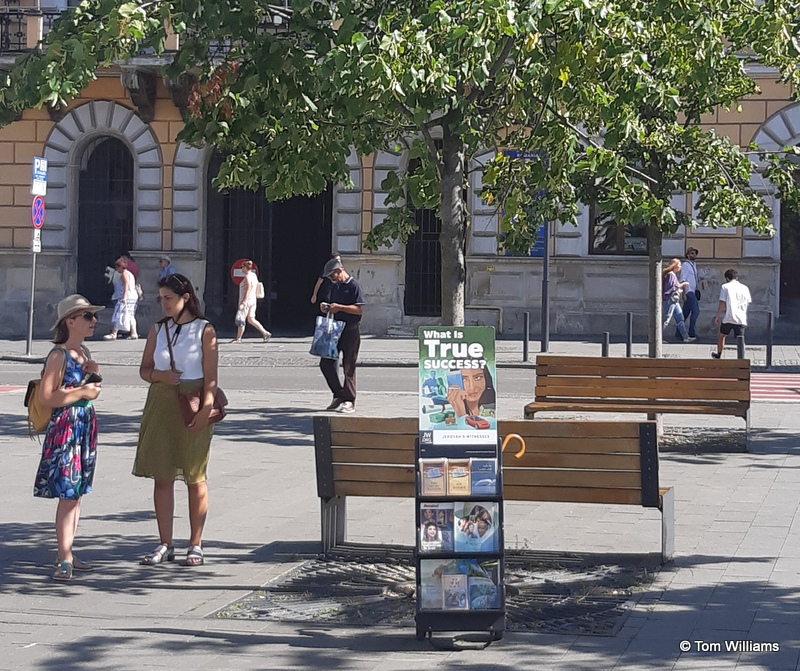
Besides all the new churches there are many older ones. In Cluj several date back to the 18th century.
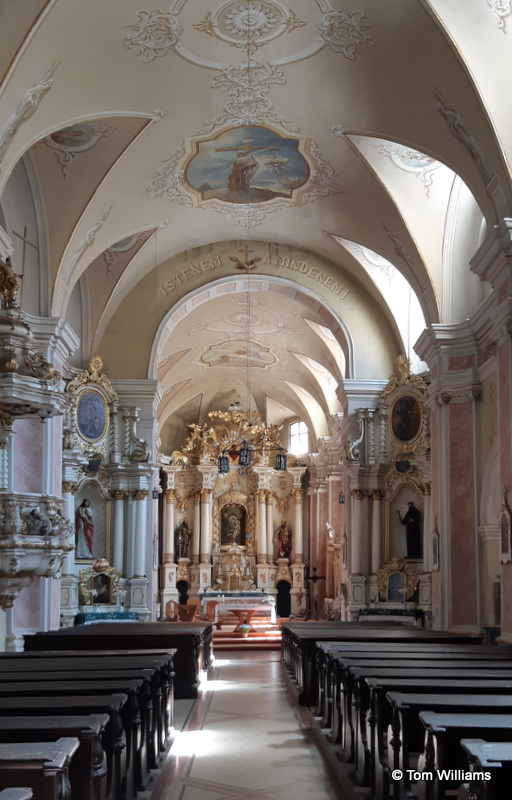
Franciscan church
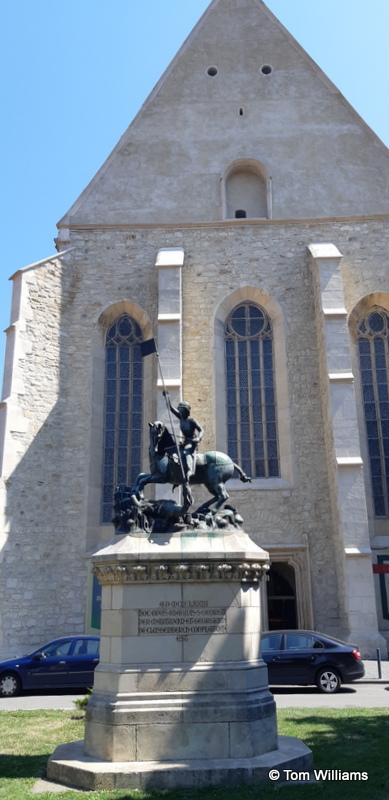
Calvinist church
The most interesting one we saw was at the Ethnographic Village on the outskirts of the town, where buildings from around the country have been reconstructed. Traditional village churches were made entirely of wood and Romanians are particularly proud of this fine example originally from Cizer in Salaj county.
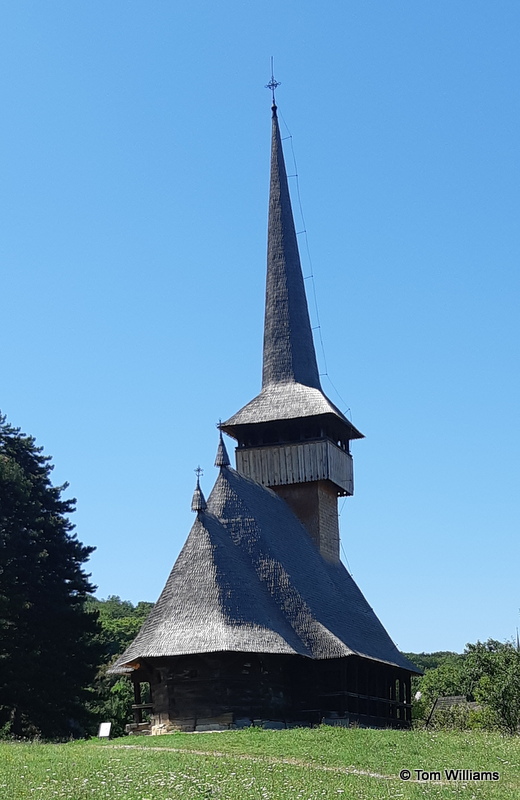
9. Much of the centre of Cluj is a building site
European funding is being used to restore many of the old buildings in Cluj. Some of the most famous monuments are inaccessible because they are being, effectively, rebuilt. It seems that some may be closed for a while. Guidebooks are not very reliable about pointing out which these are, so don’t, for example, get all excited about visiting St Michaels Cathedral, which may indeed be the wonder of Gothic architecture it’s claimed to be, but which is now mainly hoardings and scaffolding.
10.Romanian or Hungarian – don’t even go there
What’s the significance of this not particularly interesting looking house in the centre of Cluj? It was the birthplace of Matthias Corvinus. There’s a big statue of him in front of the cathedral as well.
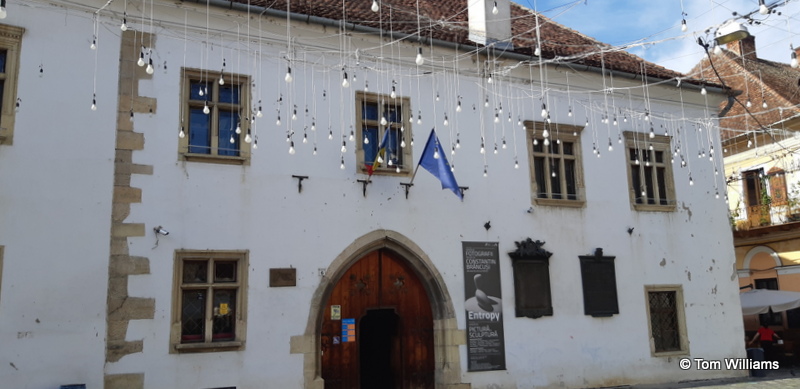
Although he was supposed to have been born in Cluj, he became king of Hungary. Parts of Transylvania have passed between Hungary and Romania over the centuries and there is still a substantial Hungarian population in the area. In the past, there have been significant tensions between the two communities and the inscription on the statue is regularly changed as either the Hungarians or Rumanians claim Matthias as “their” king. Right now, it just says “Rex” and leaves it to the reader to decide whether he was Hungarian or Romanian. We took our cue from the inscription and avoided any discussion of Romanian vs Hungarian culture.
Bonus round: Everybody waits for the green man on crossings
Where there are traffic lights at pedestrian crossings, everybody waits with the green man, even if there is clearly no traffic in sight. If you cross against the lights, nobody will berate you, but they will look slightly bemused. Probably best not to.
So there you are: our summer holiday. Enjoy yours. Normal service (with lots about Wellington) will be resumed next week.

What an interesting post, Tom. Romania has never been on my list of places to visit, but you’ve painted a very attractive picture and I’m changing my mind. The people sound lovely and I like your description of the food!
We certainly enjoyed ourselves. We last visited Romania many years ago under communism. It’s changed a lot!
Germans also wait for the green man, regardless of whether there’s any traffic in sight or not. After only a couple of weeks of living there, I found myself looking askance at tourists who didn’t wait.
My son was staying on a military base in Canada in the middle of nowhere. A long, straight road ran across open country to the base and one day, for some reason (out for a run probably) he was on this road and crossed across it. A police car drives up to him and tells him off. He points out that he could have sat down and eaten a sandwich in the middle of the road and still have got up and crossed before anything within sight could have reached him. The officer didn’t push the point, but clearly thought him some mad foreigner.